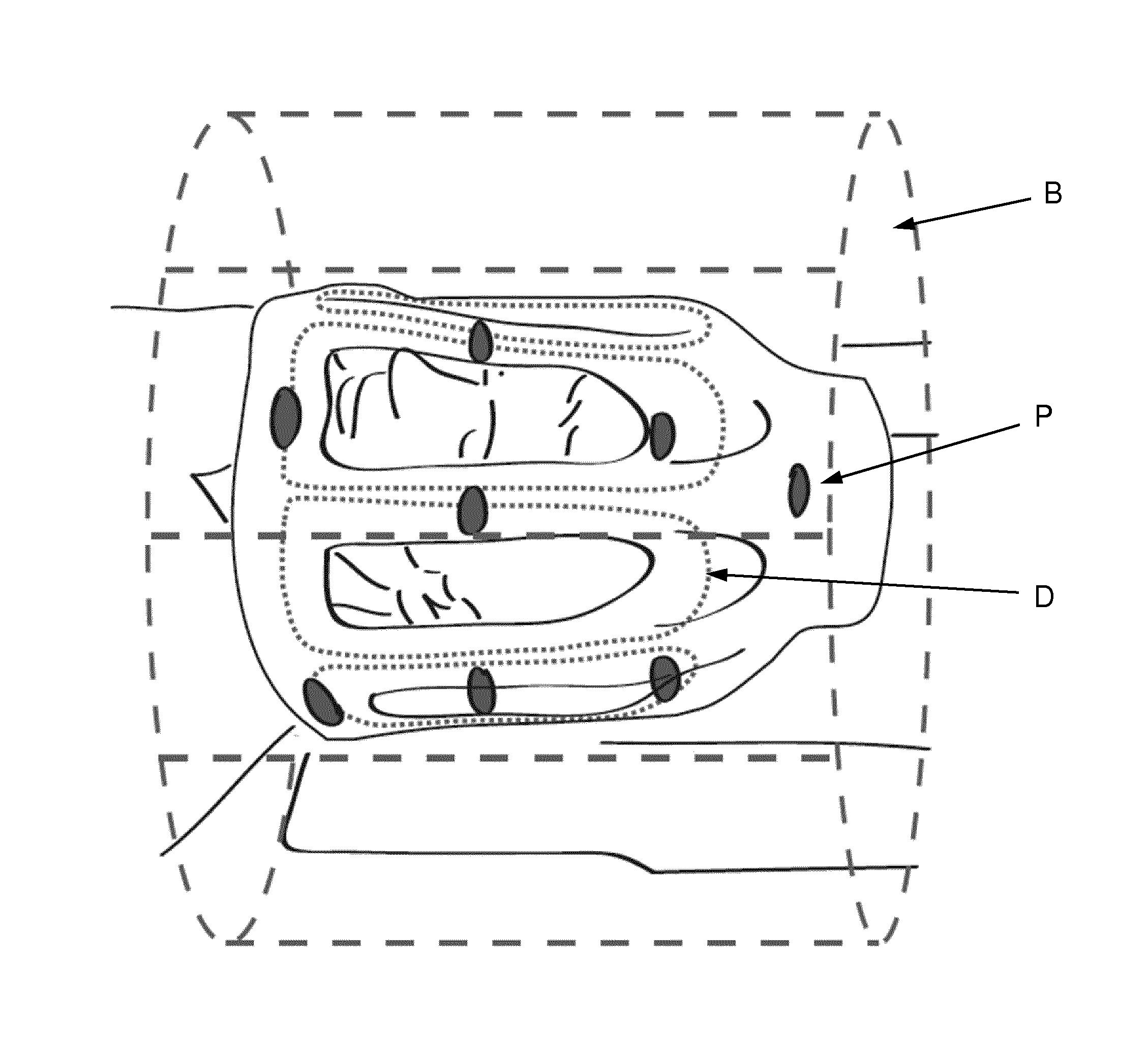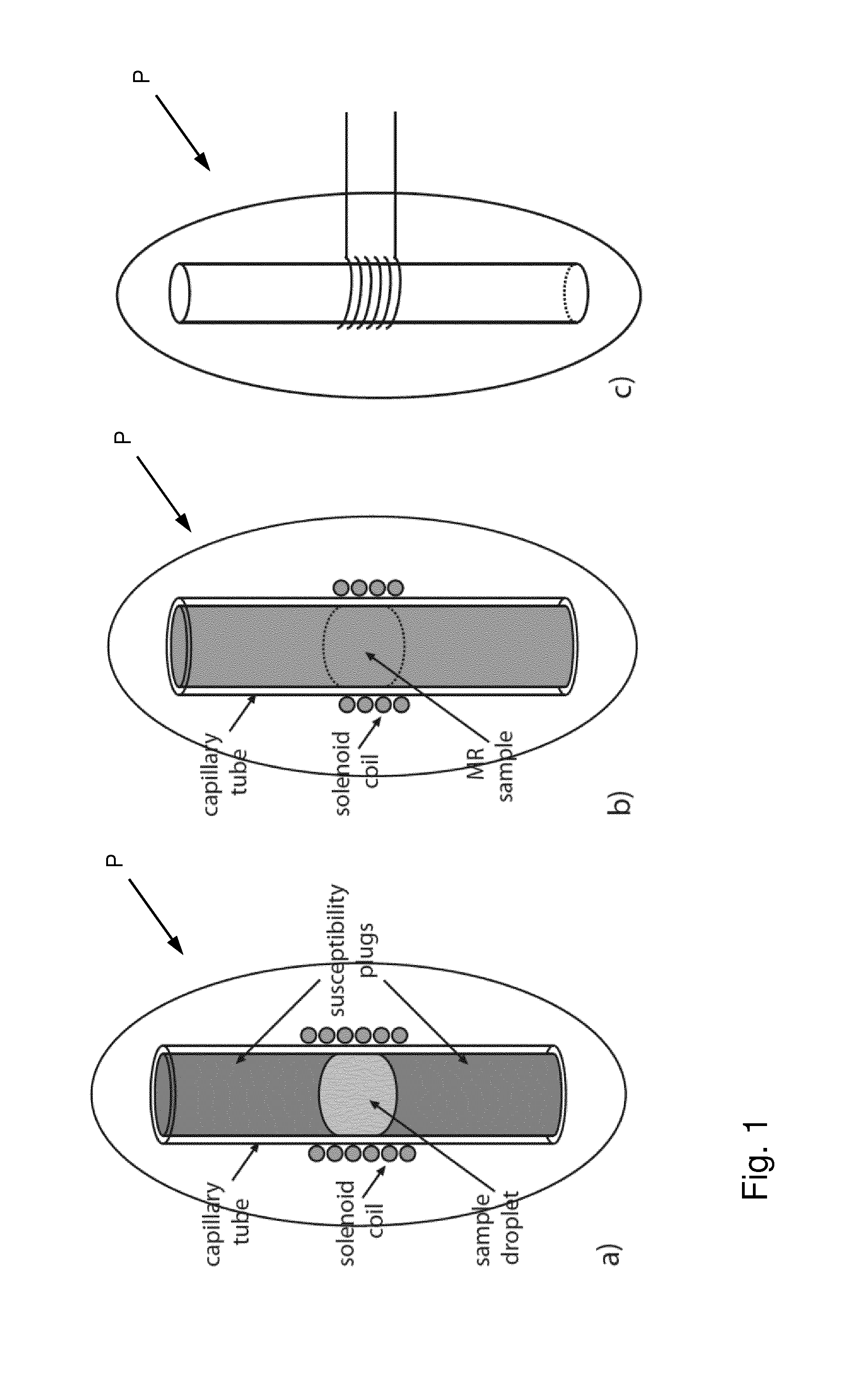Dynamic Field Camera Arrangement for Magnetic Resonance Applications and Methods for Operating the Same
- Summary
- Abstract
- Description
- Claims
- Application Information
AI Technical Summary
Benefits of technology
Problems solved by technology
Method used
Image
Examples
Embodiment Construction
[0082]The low-frequency magnetic field detectors, also called “probes” P, shown in FIGS. 1a to 1c each comprise a magnetic resonance (MR) active substance, which in most cases is in liquid form. As mentioned further above, the magnetic field detectors are intended for monitoring electromagnetic field behavior in a spatial region comprising a main magnetic field (B0) and a radiofrequency (RF) field limited to a first RF band, particularly in an MRI or NMR apparatus. Each detector has means for pulsed MR excitation of said substance and means for receiving an MR signal generated by said substance, realized here as one solenoid coil wound around a capillary tube serving as container for the MR active substance. It is understood that the excitation and receiving means comprise further components not shown in these drawings, particularly electronic components for generating the RF excitation pulse and other electronic components for receiving and processing the probe signal. It is also u...
PUM
 Login to View More
Login to View More Abstract
Description
Claims
Application Information
 Login to View More
Login to View More - R&D
- Intellectual Property
- Life Sciences
- Materials
- Tech Scout
- Unparalleled Data Quality
- Higher Quality Content
- 60% Fewer Hallucinations
Browse by: Latest US Patents, China's latest patents, Technical Efficacy Thesaurus, Application Domain, Technology Topic, Popular Technical Reports.
© 2025 PatSnap. All rights reserved.Legal|Privacy policy|Modern Slavery Act Transparency Statement|Sitemap|About US| Contact US: help@patsnap.com



